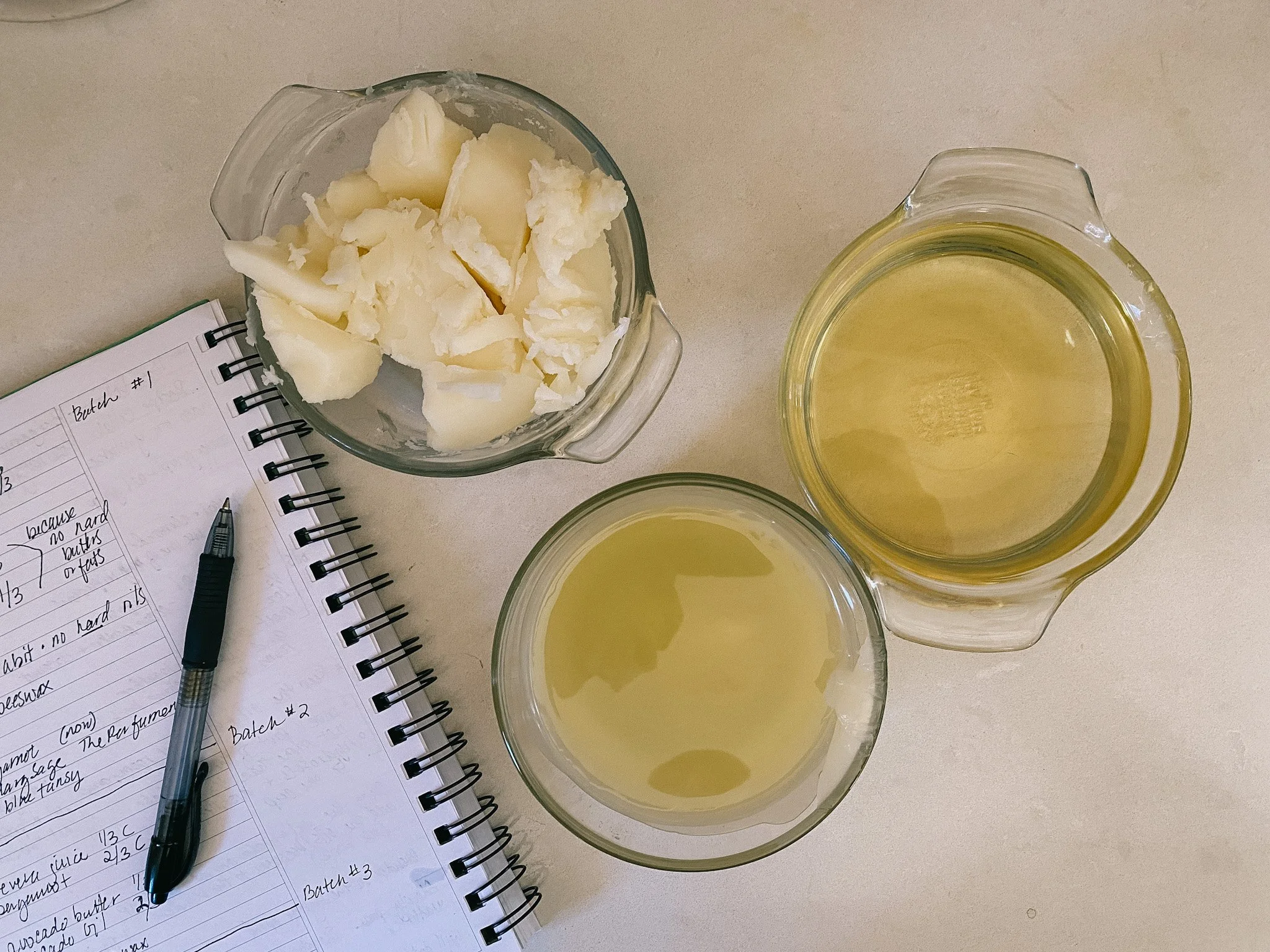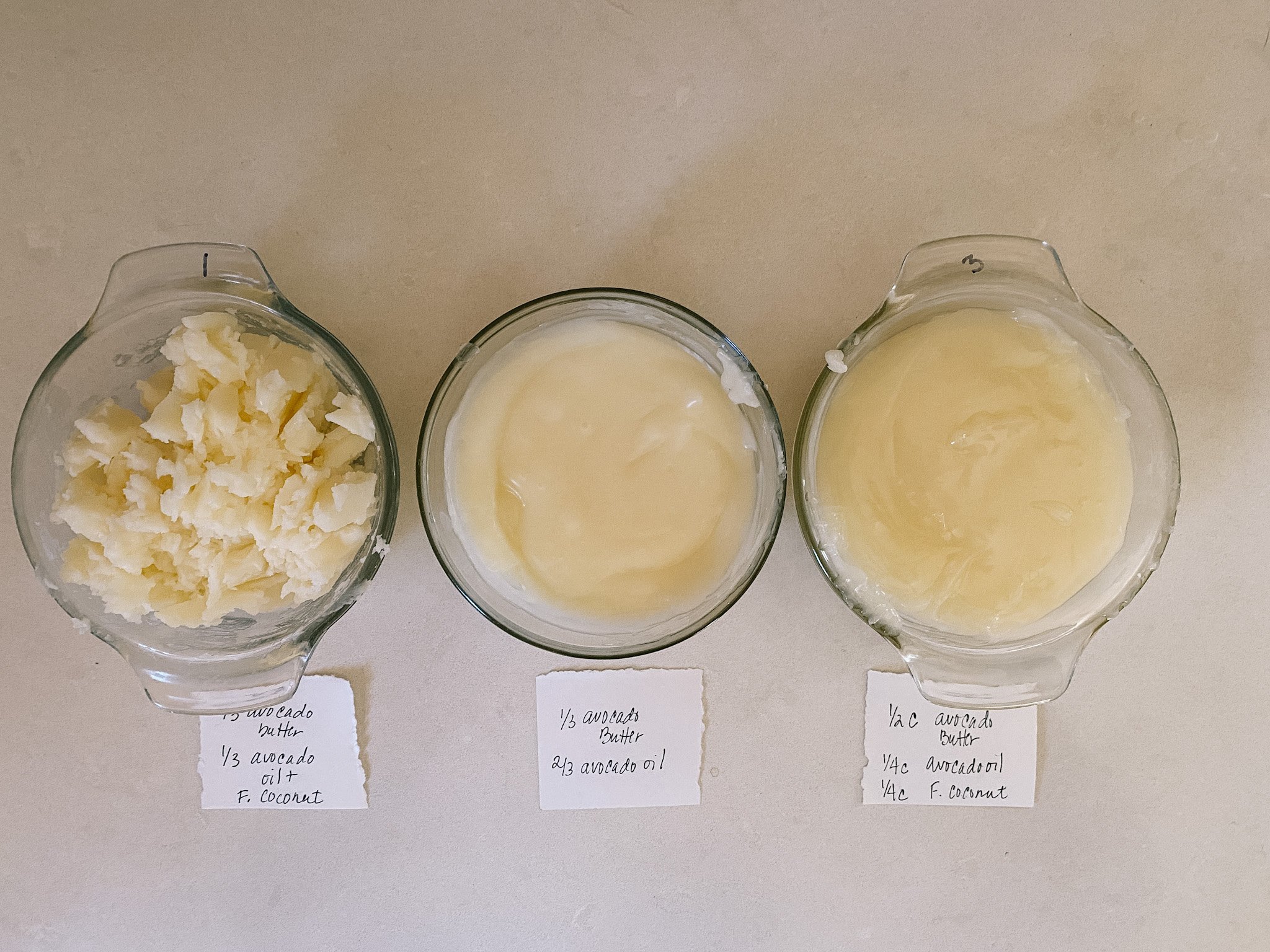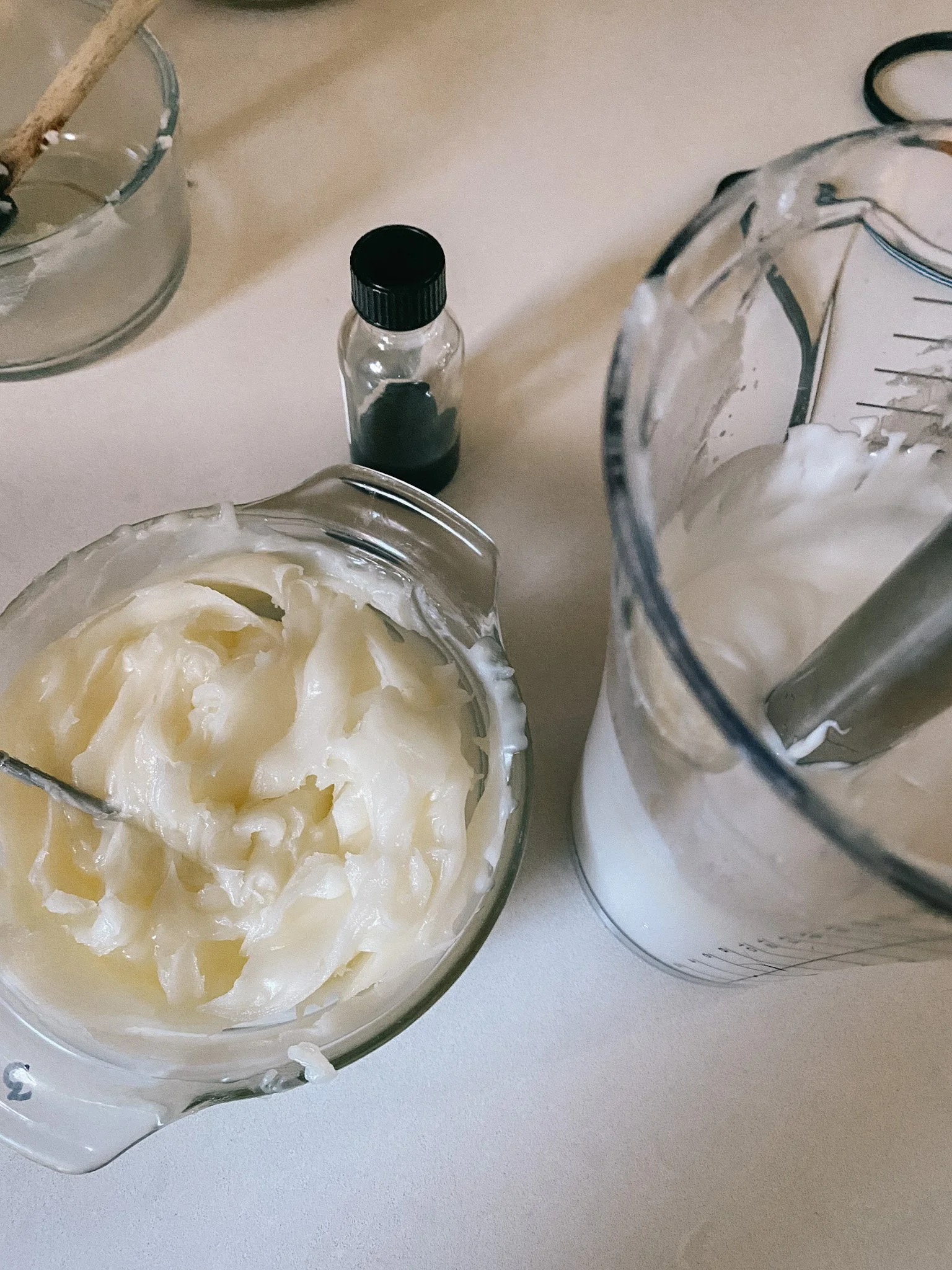Lotion-making Made Easy
Rosemary Gladstar’s Famous Lotion Recipe
“Like oil and water” people say when they mean things don’t go together. Actually oil and water blend beautifully and naturally when we’re talking about skin.
Healthy skin creates the perfect blend without any help from us.
Anyone who has tried to make mayonnaise or keep a salad dressing from separating knows that it’s not that simple for US to get right.
This simple, luscious lotion recipe by the “God-Mother” of the American Herbalist Movement is a great place to get started. The recipe is clear and easy, and I did it three times successfully in one day – with just a stick blender and a couple of ingredients. The results are silky, creamy and very spreadable.
Because it’s my job, I had a ton of options in my studio pantry to play with, and I was inspired by a beautiful Bergamot Hydrosol. But you don’t need fancy stuff, and everything was available at our local health food store (I checked).
The reason this lotion works so well is that it is 50% ‘water’, and it’s water that moisturizes. Oils protect and nourish, and beeswax helps keep the moisture locked in, but it’s the water that keeps skin from being thirsty.
To make the lotion we will be emulsifying oil and water using a physical method without any extra waxes (emulsifying wax, conditioning wax) or preservatives. I do recommend adding vitamin E as an antioxidant for your formula, and because your skin loves it.
Oil, Water, Wax
Materials List:
A pot and a stainless bowl to create a Bain Marie
Clean and dry spatula
Measuring cups
Pyrex or similar with pouring spout for waters
Sterilized jars for storing or sharing your beautiful creation *
The recipe makes about 3 cups of finished lotion
Ingredients:
Waters
⅔ cup distilled water (floral water or hydrosol)
⅓ up aloe vera gel
Or you can use 1 cup distilled water or hydrosol
Oils
⅔ cup apricot, almond or aloe oil
⅓ cup hard butter (shea, cocoa, coconut)
½ ounce grated beeswax (I like the pastilles)
Additives
½T Vitamin E
Essential Oils
*if you’re repurposing a cosmetics jar, remove the cardboard from the lid - you won’t be able to sanitize this and it might cause bacteria to grow
Before you try the recipe at home, I recommend watching this video - And if you’re gathering supplies Mountain Rose Herbs has all the stuff you need. Local folks can try Porter Bottle for jars.
Combine the waters in a glass measuring cup. Set aside.
In a double boiler over low heat, combine the oils and beeswax. Heat them just enough to melt.
Pour the oils into a blender or clean bowl, and let them cool to room temperature.
The mixture should become thick, creamy, semisolid, and cream-colored.
This cooling process can be done in the refrigerator, but keep an eye on it so it doesn’t become too hard. This is super important, the batch that I let get too hard was very challenging to emulsify and needed lots of coaxing and extra skills.
When the mixture has cooled, turn on the blender at its highest speed. In a slow, thin drizzle, pour the water mixture into the center vortex of the whirling oil mixture. If you’re using your stick blender, start with the lower speed and increase as needed. The mixture came together really quickly for me.
When most of the water mixture has been added to the oils, listen to the blender and watch the cream. When the blender coughs and chokes and the cream looks thick and white, like buttercream frosting, turn off the blender.
You can slowly add more water, beating it in by hand with a spoon, but don’t overbeat. The cream will thicken as it sets. Pour into cream or lotion jars and store in a cool location.
Blue Tansy Recipe via Alchemy
Water: Bergamot Hydrosol
Oils: 2/3 cup avocado oil, 1/3 cup avocado butter (from the Natural Food Patch in Ferndale)
Beeswax: .5 oz by weight
Essential Oil blend: 2 mL Bergamot, 1 mL Clary Sage and 10 drops of Blue Tansy
Bergamot and Clary Sage are pretty easy to find. You’ll want to go online for the Blue Tansy, I recommend Mountain Rose Herbs or Eden Botanicals.
A note about hard oils/butters and soft oils:
I did this recipe two ways, once with 2/3 cup butter, and 1/3 oil, and once as shared above. This made for a lovely textured finished product, but you really have to be careful not to let the oils completely solidify again. If they do, you’ll want to warm them to a storable consistency before adding the waters.
The texture of the lotion made with more soft oils (liquid oils) was silkier and more lotion-y.
The end texture will be really effected by the crispness, hardiness, and softness of the ‘hard’ oils. Hard oils include butters. and oils that are hard at room temperature. This group includes shea, cocoa, coconut, kokum, and avocado butter.
Refer to the ‘gallery’ for texture goals. The middle photo has three textures. The far left is too crispy and won’t blend smoothly, shoot for one of the other two.
About Rosemary Gladstar
Rosemary Gladstar is internationally renowned for her technical knowledge and stewardship in the global herbalist community. She has been learning, teaching and writing about herbs for over 40 years. She is the originator of “Fire Cider” and co-founded ‘Traditional Medicinals’ in 1974.
A new generation of herbalists was introduced to Rosemary Gladstar because of a long-fought battle over who owns “Fire Cider”. A big win against the commercialization of traditional medicines as practiced for generations.
Rosemary is the author of twelve books and director of The Science and Art of Herbalism, an in-depth home study course with thousands of students enrolled across the globe.
The lotion recipe is in several of her books including:
Herbs for Natural Beauty
Herbal Recipes for Vibrant Health
Don’t Want to Make Your Own?
Shop our Body Butter and Lotions
Gorgeous silky texture of the lotion made with Bergamot, Clary Sage and Blue Tansy








